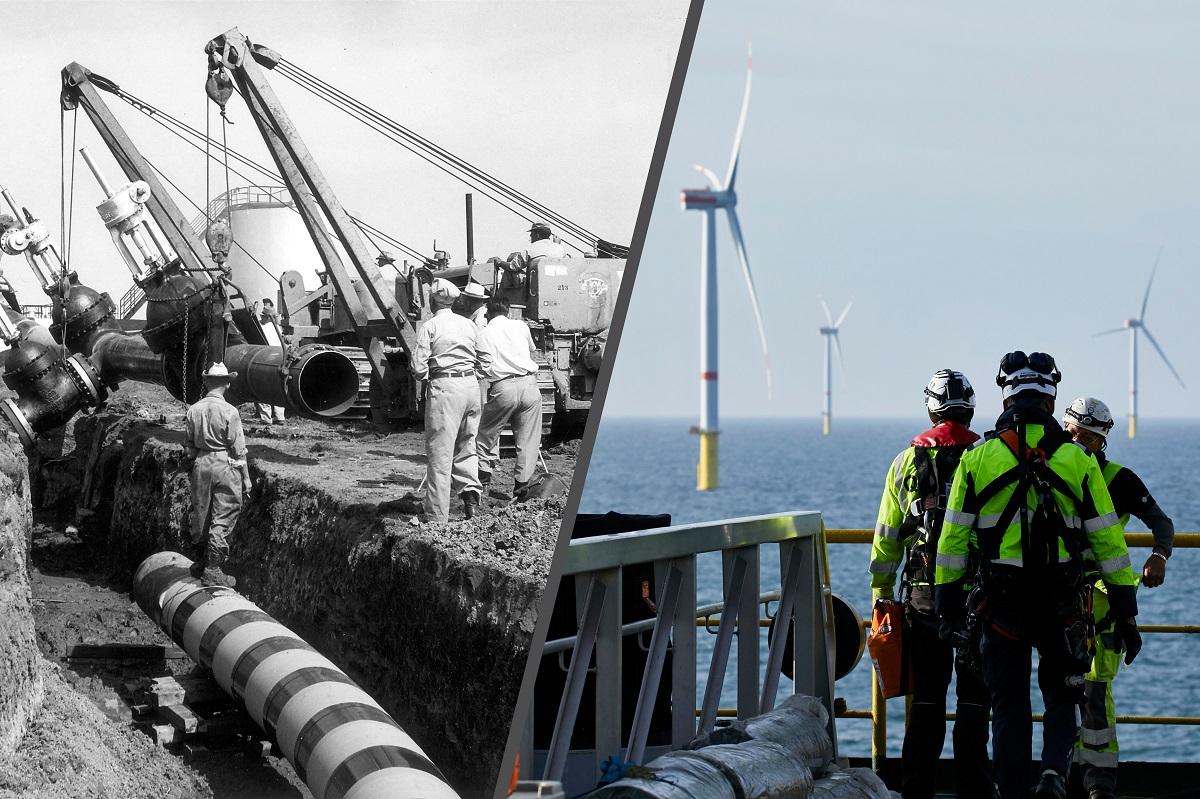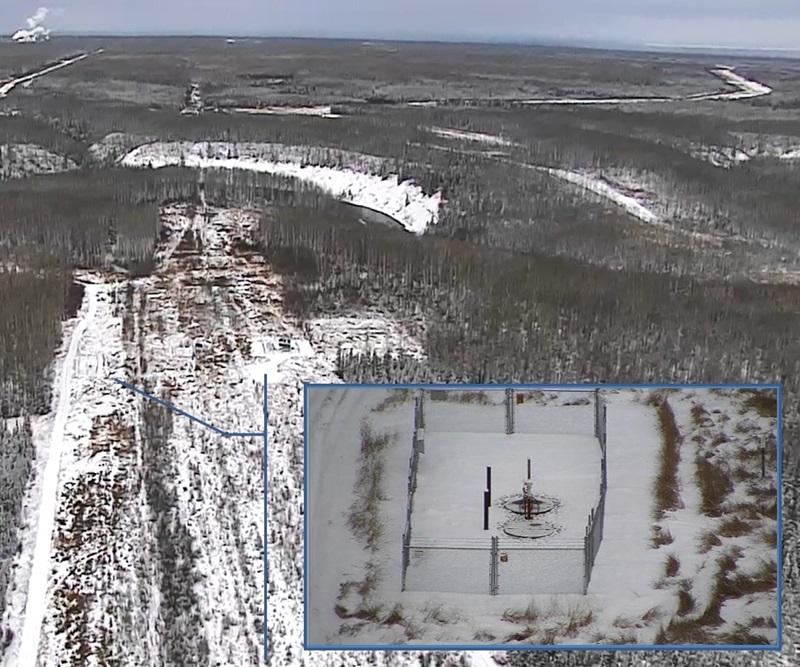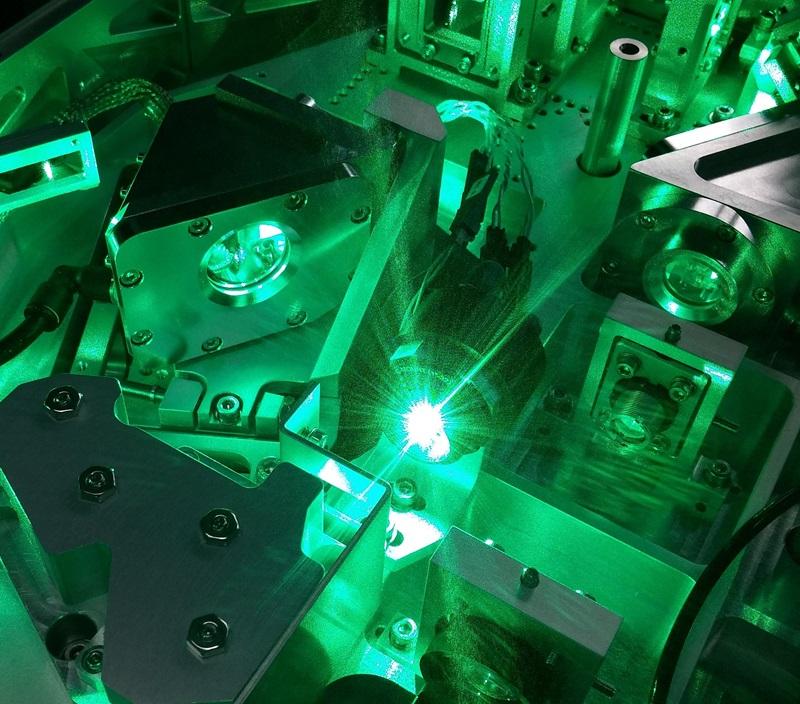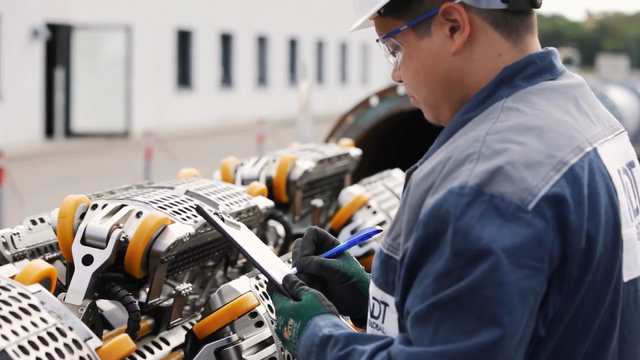Enbridge Innovation in Action: Safety Highlights
At Enbridge, the safety mindset is so core to who we are that we sometimes have difficulty appreciating how far safety tools and practices have come. Still, we strive for ever greater safety with the firm belief that all incidents are preventable.
Originally published in Enbridge's 2020 Innovation Report
Continuous innovation in safety is not simply about avoiding or mitigating the most frequent incidents, though. It’s about building a system where hazards are removed (technology replacing at-risk personnel) and where safety-focused behaviors, tools and practices are so easily performed that the safe practice becomes the most natural practice.
- Smartphone apps for safety reporting make it easy to record details closer to the event, when information is fresher, increasing the quality and frequency of information captured.
- Digitization of safety forms and work permits helps increase accessibility and eliminates the need for repetitive entries, supporting the easy “customization” of forms so that the team member is presented with only the items they need to fill out.
- QR Codes on pieces of equipment help ensure fast and accurate identification, reduce the workload to complete inspections and enhance accessibility to equipment records.
- Video conferencing technologies help bring together geographically separated personnel, rapidly aligning understanding and supporting faster response times.
- Taking the principles of ergonomic design out of the office and onto the site is helping reduce the effort involved in inspection and maintenance.
- Unmanned inspection technologies—drone-mounted and robotic—help provide eyes at a distance, risking the machine and not the man.
Our use of unmanned technologies is increasing and, in the future, the expanding range of use cases for that technology will be complemented by increased use of virtualization technologies (AR/VR and digital twins) to support and enhance safety-focused behaviors, tools and practices.
Continued investigations into the potential of smart sensors and Artificial Intelligence (AI) technology for both assets and personnel are expected to reduce administrative tasks and focus personnel on effective problem solving while reducing the risk in our systems and services.
Case studies
Unmanned Aerial Systems: Exploring new horizons
Imagine a future where a small drone takes off on its own on a Monday morning, and makes a preplanned flight to inspect an oil or gas facility, supplying data to advanced analytics and Artificial Intelligence (AI) processing for review.
Even before staff have arrived onsite, a list of items needing attention has been generated for morning review—together with a list of the required tools and parts, and a recommended action plan that considers staff schedules and upcoming weather information.
It may take some time to get there, but teams at Enbridge are already working to make this a reality.
Enbridge’s use of Unmanned Aerial Systems (UAS), otherwise known as drones, has expanded rapidly since late 2018, when we adopted their use across the company.
Since an initial approved flight for the environment team monitoring the Kalamazoo River area in Michigan, UAS operations at Enbridge have expanded to include flood monitoring, construction monitoring, survey work and 3D mapping. As we continue to expand adoption, the Enbridge team is also looking further ahead and supporting development of important new capabilities, such as beyond visual line of sight (BVLOS) operation.
BVLOS operation promises to remove the current need for the drone pilot and spotter to be able to see the platform at all times. This important ability would open up a range of new use, provided safety is ensured.
In 2020, Enbridge team members have supported two key efforts advancing BVLOS capabilities.
In the United States, Enbridge is supporting a collaborative project, sponsored by the Pipeline and Hazardous Materials Safety Administration (PHMSA) and the Pipelines Research Council International (PRCI), that is demonstrating automated detection of threats to pipeline operations on a long-endurance (17 hours) unmanned platform. This project is using a manned “chase-plane” to ensure safety while proving out the technologies and procedures of safe unmanned operation at elevated altitudes.
North of the border, the team has been supporting efforts enabled by the Canadian aviation regulator, Transport Canada, which issued the first BVLOS permit for inspecting remote oil and gas assets in civilian airspace to Alberta-based Canadian UAVS. Late in 2020, the team successfully conducted an eight-kilometer BVLOS flight over a stretch of Enbridge’s pipeline right-of-way (ROW) in the Athabasca region, capturing high resolution visible and thermal imagery of the ROW while demonstrating “airline grade” safety infrastructure.
These simple but important steps are proving the real-time ability for unmanned aerial platforms and supporting systems to expeditiously detect and communicate with manned aircraft in the vicinity, effectively providing air traffic control for the area of operations.
Enbridge will continue to work on demonstrating further new capabilities in 2021 and on identifying and beginning to develop the infrastructure and tools needed to collect, integrate and serve the data gathered, enabling the realization of even greater value from UAS operations.
Next-Generation Crack Tool (NGCT): ‘A truly disruptive and revolutionary technology’
Inline inspection tools (ILI) are highly complex pieces of equipment that use advanced sensors to inspect pipeline walls from the inside. Scanning millimeter by millimeter, these “smart pigs” search for tiny imperfections, dents, metal loss, corrosion and cracking.
While cracking rarely occurs in pipelines, it is usually the result of incremental slope movement, weld quality, or the original manufacturing process.
Enbridge and NDT Global, a worldwide pipeline inspection leader, have developed a next-generation crack inspection tool (NGCT) that takes pipeline safety to the next level. This inline inspection tool’s advanced Proton measurement technologies allow for better pipeline fitness assessment—by identifying and sizing features that were never previously detectable.
“This really is cutting-edge technology (that will) drive the direction of mainstream inspection robots of the future. This new technology we’ve developed really enables us to access a completely new application for inline pipeline inspection,” says NDT Global CEO Richard Matthews.
A truly disruptive and revolutionary technology, in the words of NDT Global’s Nathan Leslie, the NGCT is a phased-array tool, meaning that it can examine the pipe wall’s interior from different angles of incidence, and potentially detect and size previously undetectable features that warrant a closer look.
Ultimately, this means better fitness-for-purpose assessments on our pipeline network. It also means reducing water usage by proving line integrity without the need for hydrostatic testing of a pipeline.
After being validated in 2019, the NGCT collected 239 Terabytes (TB) of data in inspecting about 524 kilometers of pipe along our Mainline network in 2020, allowing us to ensure the Enbridge pipeline network is reliable and safer than ever.
“Enbridge is very well-respected around the world as being the real leader in pipeline integrity management, and bringing that kind of expertise and specific problem to NDT enabled us to create a very specific solution,” says Matthews.
Flyovers with added focus: Quebec’s Flyscan advances aerial surveillance technology
Enbridge’s US$1M investment and support aim to improve safety of energy industry infrastructure
They are the energy industry’s eyes in the sky—and they may soon include laser focus.
Regular aerial right-of-way (ROW) patrols are an important component of ensuring energy infrastructure safety, and a Canadian startup is hoping to raise the technological stakes of these flyovers with a groundbreaking aerial surveillance platform.
Enbridge, which operates a multi-layered leak prevention and detection program on its pipeline network, recently announced its US$1-million investment in a US$4.3-million venture capital financing agreement by Quebec City-based Flyscan Systems, as Flyscan works to bring its technology to market. BDC Canada’s Cleantech Fund and the National Optics Institute (INO) are also part of the financing.
“During our patrols, pilots are watching for leaks and identifying threats or encroachments on our rights-of-way. But they’re also human, and while they’re in the air, they are multitasking with instrumentation and communications,” notes Ray Philipenko, the Edmonton-based director of Enbridge’s Pipeline Control Systems and Leak Detection (PCSLD) group.
“We anticipate that Flyscan’s technology will help enhance and augment the monitoring capability of the pilot.”
Flyscan’s platform consists of a two-pronged approach—an active ultraviolet LiDAR (Light Detection and Ranging) laser and a passive hyperspectral camera, both mounted on small planes or helicopters.
LiDAR technology is calibrated to identify small leaks and detect hydrocarbons unique to a crude oil and liquids pipeline system. The complementary suite of optical sensors can capture terabytes’ worth of digital images to help pipeline operators detect leaks, ROW encroachments and geohazard threats, such as slope instability.
“We are extremely fortunate to have a strategic investor that not only operates the longest and most complex crude oil and liquids pipeline system in the world, but is also a known market leader for the adoption of new technologies,” says Eric Bergeron, founder and CEO of Flyscan.
“Enbridge’s contribution to our development will go beyond financial support, to include defining the industry’s needs and providing a real-life business case demonstration.”
Collaborating with Flyscan also represents an opportunity for Enbridge’s Technology + Innovation Lab (T+IL), which is focused on developing analytics-based safety solutions and the use of data as an organizational asset.
As part of this project, Enbridge plans to build a foundational software framework using Artificial Intelligence with deep learning algorithms that will be capable of ingesting a significant amount of optical data. The software may eventually process data from additional sources, including satellites and drones.
“Enbridge is committed to protecting the environment. In collaborating with Flyscan we are building new ways to advance pipeline leak detection and improve right-of-way monitoring,” says Bhushan Ivaturi, Enbridge’s Senior Vice President and Chief Information Officer who leads Technology, Information Services and Digital at Enbridge. “At Enbridge, we are harnessing the power of data, technology and innovation to further advance pipeline safety.”
Tests of Flyscan’s hyperspectral camera began along Enbridge’s pipeline network in December 2020, while LiDAR laser testing on the Enbridge system is on track for early 2022.
“The work being done by Flyscan is exciting and very promising,” notes Cam Meyn, a supervisor with Enbridge’s PCSLD group. “Multiple groups here at Enbridge see great value in this technology—not only for leak detection, but overall right-of-way management.”
Enbridge’s “defense-in-depth” leak detection approach includes Computational Pipeline Monitoring (CPM) systems and 24/7 controller monitoring, in addition to air and ground patrols augmenting a comprehensive and rigorous prevention and detection.
“Enbridge’s investment in Flyscan demonstrates our commitment as an industry leader in safety and innovation,” says Phil Martin, Leak Detection Manager at Enbridge.





